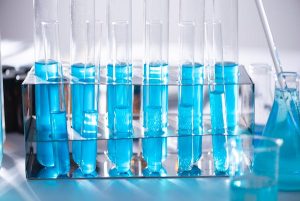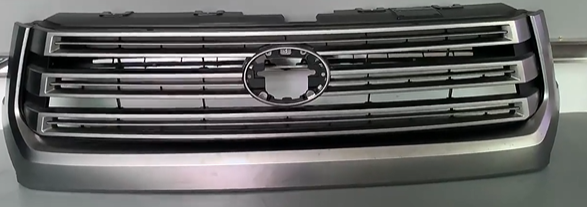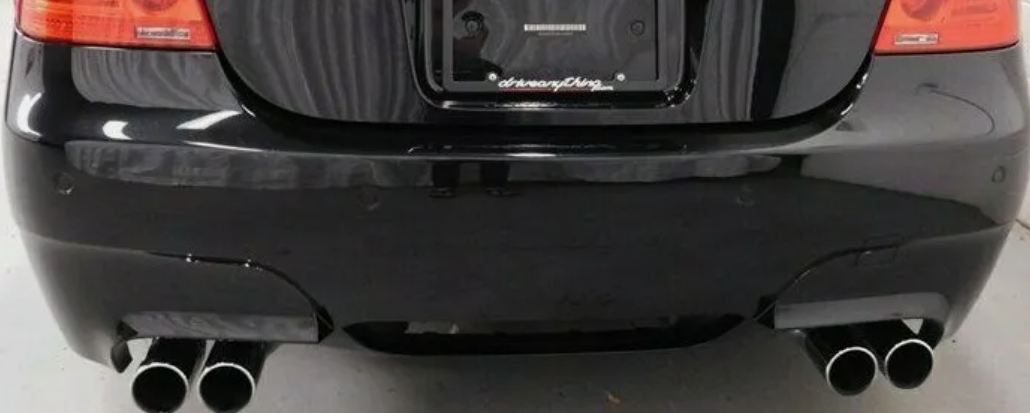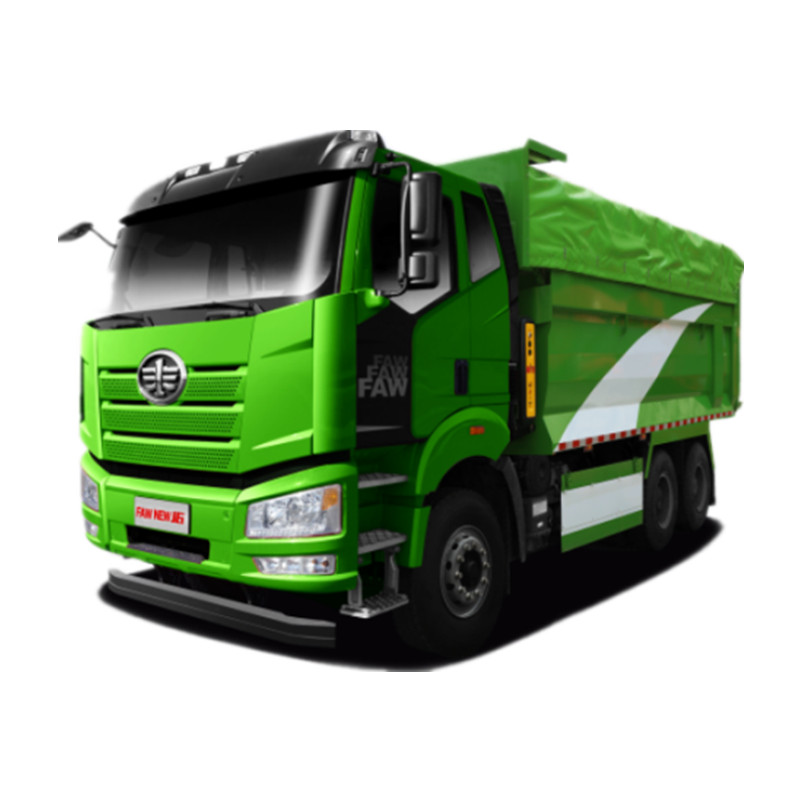Polypropylene, referred to as PP, is a polymer made of propylene through the addition polymerization reaction . It is a white waxy material with a transparent and light appearance . The chemical formula is (C 3 H 6 ) n and the density is 0.89~0.91g/cm 3 , Flammable, melting point is 164~170℃, [17 ]Softens at around 155℃, and the operating temperature range is -30~140℃ . It can resist the corrosion of acids, alkalis, salt liquids and various organic solvents below 80℃, and can decompose under high temperature and oxidation. Polypropylene is a thermoplastic synthetic resin with excellent properties. It is a colorless, translucent thermoplastic lightweight general-purpose plastic with chemical resistance, heat resistance, electrical insulation, high-strength mechanical properties and good high-wear resistance processing properties. , widely used in the production of clothing, blankets and other fiber products, medical equipment, automobiles, bicycles, parts, transportation pipelines, chemical containers, etc., and also used in food and pharmaceutical packaging.
On October 27, 2017, the World Health Organization’s International Agency for Research on Cancer released a preliminary reference list of carcinogens. Polypropylene is included in the list of Class 3 carcinogens.

Physical and chemical properties #
1. Odorless, tasteless and non-toxic. It is the lightest among commonly used resins;
2. Excellent mechanical properties, including tensile strength, compressive strength and hardness, outstanding rigidity and bending fatigue resistance. The movable hinge made of PP can withstand more than 7×10 7 times of folding and bending without damage, and impact at low temperatures. Less strong. The tensile strength of PP is generally 21-39 MPa; the bending strength is 42-56 MPa, the compressive strength is 39-56 MPa, the elongation at break is 200%~400%, the notched impact strength is 2.2-5 kJ/m 2 , and the low temperature Notched impact strength 1-2 kJ/m 2 . Rockwell hardness R95~105;
3. Good heat resistance, continuous use temperature can reach 110-120℃;
4. Good chemical stability. Except for strong oxidants, it does not interact with most chemicals. Solvents cannot dissolve PP at room temperature. Only some halogenated compounds, aromatic hydrocarbons and high-boiling aliphatic hydrocarbons can make it swell. It has particularly good water resistance. ;
5. Excellent electrical properties, good resistance to high-frequency electrical insulation, and good electrical insulation in humid environments;
6. Since there are many tertiary carbon atoms with methyl groups on the main chain of PP, the hydrogen on the tertiary carbon atoms is easily attacked by oxygen. Therefore, PP has poor weathering resistance and must add antioxidants or ultraviolet absorbers ;
7. Mice were intragastrically administered 1 to 5 times at a dose of 8g/kg, and no obvious symptoms of poisoning were caused. Rats inhaled the decomposition products of polypropylene when heated to 210-220°C 30 times for 2 hours each time, causing symptoms of eye mucosa and upper respiratory tract irritation. Like polyethylene, it is prohibited to use its recycled products to hold food.
application #
Usage allocation #
Injection molding products account for 50% of total consumption in European and American countries, mainly used as parts for automobiles and electrical appliances, various containers, furniture, packaging materials and medical equipment; films account for 8% to 15%, and polypropylene fiber (China Polypropylene (commonly known as polypropylene) accounts for 8% to 10%; pipes and plates used in construction and other applications account for 10% to 15%, and other materials account for 10% to 12%. China’s current use for woven products accounts for 40% to 45%, followed by film and injection products accounting for about 40%; polypropylene and others account for 10% to 20%.
China mainly uses polypropylene as a material in food packaging, household items, automobiles, optical fiber and other fields. The largest areas of use of polypropylene in China are woven bags, packaging bags, strapping ropes and other products, accounting for about 30% of total consumption. In recent years, with the development of polypropylene injection molding products and packaging films, the proportion of polypropylene used in woven products has declined, but it is still the area with the largest consumption of polypropylene. Injection molding products are the second largest polypropylene consumption area in China, accounting for about 26% of total consumption. It is also one of the areas with the largest demand for polypropylene in the future. Another major consumption area of domestic polypropylene is film, accounting for about 20% of total consumption, mainly BOPP (biaxially oriented polypropylene film). In the next few years, the proportion of textile products will gradually decrease, while the proportion of injection molded products, pipes and plates will increase. According to experts’ predictions on the development of the polypropylene industry, China’s demand for polypropylene is likely to increase by 2020 Reaching about 23.7 million tons. Textile products, injection molded products, and films are still the main demand areas for polypropylene in China, while the annual demand for pipes, plates, fibers and other fields is growing rapidly, and domestic demand for polypropylene is also growing rapidly. The market development prospects of special materials such as high-speed drawing BOPP films, pipes, thin non-woven fabrics, and highly transparent food containers are good.
Machinery and automobile manufacturing parts
#
Polypropylene has good mechanical properties and can be directly manufactured or modified to manufacture parts of various mechanical equipment, such as manufacturing industrial pipes, agricultural water pipes, motor fans, basic templates, etc. Modified polypropylene can be molded into bumpers, anti-scuff strips, car steering wheels, instrument panels and interior decoration parts, etc., which can greatly reduce the weight of the car body and save energy.
Electronic and electrical industrial devices
#
Modified polypropylene can be used to make insulating shells for household appliances and washing machine linings, and is commonly used as insulation materials for wires, cables and other electrical appliances. Use 60 to 80 parts by weight of homopolypropylene, 20 to 40 parts of ethylene-vinyl alcohol copolymer , and 1 to compatibilizer (reactant of polypropylene maleic anhydride graft and ethylene-vinyl alcohol copolymer) 10 parts, the polypropylene composite material made by mixing at 170℃~190℃ has high toughness, its impact strength is as high as 210J/m, it has high gas barrier properties, and the water vapor permeability rate is close to 2000g·μm/ (m 2 ·24h). When preparing barrier films, traditional film-making processes can be used. The process is relatively simple and the production cost is low.
construction industry
#
Polypropylene fiber is the lightest of all chemical fibers . Its density is (0.90~0.92)g/cm 3 . It has the advantages of high strength, good toughness, good chemical resistance and antimicrobial resistance, and low price. It is made of glass. Polypropylene modified with fiber reinforcement or modified with rubber or SBS is widely used to make templates for construction projects. After foaming, polypropylene can be used to make decorative materials . When an earthquake occurs, the failure mode of polypropylene fiber ceramsite concrete is plastic failure without fragments spalling. It is safer to use polypropylene fiber ceramsite concrete than plain ceramsite concrete.
Agriculture, fisheries and food industry
#
Polypropylene can be used to make greenhouse air awnings, mulch films, culture bottles, agricultural tools, fish nets, etc., and to make food turnover boxes, food bags, beverage packaging bottles, etc. It is reactively blended with waste PET (polyethylene terephthalate) to make multi-functional waste PET, and is an in-situ fiber-forming composite material made by compounding multi-functional waste PET with polypropylene in-situ fiber-forming. This composite material has structural characteristics such as the formation of special-shaped microfibers from waste PET, and the formation of a moderately flexible and strong bonding interface between waste PET microfibers and PP matrix resin. The toughness and stiffness of the in-situ fiber-formed composite material prepared by combining waste PET and PP are both higher than that of PP. Significantly improved, the reproducibility of mechanical properties is quite good. Recycling waste PET, a large amount of waste produced every year in China, has significant economic and social benefits.
The eastern coastal areas of China have vast ocean tidal flats with typical saline soil characteristics. There is research on polyacrylamide (PAM) synergizing with three types of pastures to implement soil and water conservation in coastal saline soil areas. PAM was administered under biological measures. It has a good promoting effect on all three types of forage to improve the soil’s resistance to erosion. The application of PAM can reduce soil erosion and increase rainwater interception; give priority to low dose (1g/m), which has the highest soil and water conservation efficiency per unit mass of PAM, which can reduce annual erosion by 42.8%~46.7% and inhibit the total amount of soil evapotranspiration. The amount is 28.7%~40.4%, increasing the soil water loss by 5.0%~12.4%, reducing the water loss rate by 1.83%~3.25%, and promoting the increase of soil water holding capacity; in the early growth stage of pasture. Increase rainwater interception by 16.5%~33.8%. The synergistic effect of PAM is beneficial to inhibiting the generation of soil evapotranspiration and enhancing rainwater interception capacity.
Textile and printing industry
#
Polypropylene is the raw material of synthetic fiber. Polypropylene fiber is widely used to make lightweight and beautiful durable textile products. The pictures printed with polypropylene materials are particularly bright, bright and beautiful.
Other industries
#
In the chemical industry, polypropylene can be used to prepare various corrosion-resistant pipelines, storage tanks, valves, special-shaped packing in packed towers, filter cloths, corrosion-resistant pumps and corrosion-resistant container linings; in medicine, it can be used to make Medical equipment; polypropylene can also be developed and applied in the energy field through grafting, compounding and blending processes.















